As you listen, following the slowly emerging sustained long tones, the suggestion of rattling bones, sunshine, lavender and beautiful clean beaches come to mind.
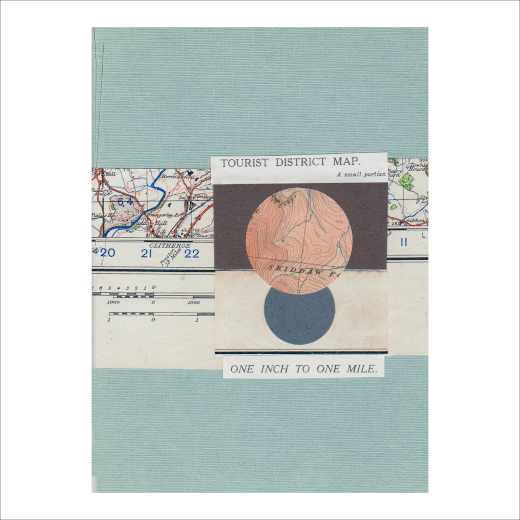
Celestial colors
There is no easy simple formula, things seem to magically happen, imagine musical maps and diagrams with little bits of field recordings tucked into the long drone-floating baths. Each edition of Islands features a unique hand-made collage design, made from old maps, vintage materials and cardstock, and limited to 40 copies, hand-numbered and packed in glassine bags. As you listen, following the slowly emerging sustained long tones, the suggestion of rattling bones, sunshine, lavender and beautiful clean beaches come to mind. The first track is “Hvar” (3:46), and as your librarian I am obliged to tell you things that you need to know. The sound is of an orchestra awakening, finding the strongest groove, and proceeding with blending the drones just so.
Hvar is a Croatian island in the Adriatic Sea, located off the Dalmatian coast, lying between the islands of Brač, Vis and Korčula. The sea rings smooth to slight. There is always a risk of mist or fog in the far north of the Adriatic. You need to know more, dreaming as you listen constantly. The main winds in the Adriatic are the Bura, Jugo, and Maestral. The Bura is a cold, dry wind that blows from the continent towards the open sea. The Jugo is a warm, humid wind that blows throughout the Adriatic and is accompanied by heavy clouds and rain. The Maestral is a local westerly wind that blows from the sea, mostly in the summer. You can hear them, listen.
What I hear begins with celestial colors, they slowly fade in, until there are lots of colors, microscopic tinkling blades hidden amidst the drifting musical instruments. I have to wonder, is that a real flute? To me the air sounds suggest a sense of pleasant hissing. “Gozo” (5:31) is the second-largest island of the Republic of Malta, rumored to be built by giants. The word Gozo is from “belonging to the giants,” where these musical interpretations are pulling from among the Maltese islands. I hear the waves out there along the edge of the Maltese archipelago. Once, perhaps on this island there was a correspondence to Calypso’s Cave (from Homer’s Odyssey, where the island is called Ogygia) and the Ġgantija Neolithic temples which are amongst the oldest surviving man-made structures. Ġgantija temples are also amongst the world’s oldest free-standing structures. Today, the sound is clear and hesitant, slowly gliding through endless fragrant almost heavy marine entwined dream streams.
Sleepy and in slow motion ::
Now the silver and gold electronic horns are coming in, sleepy and in slow motion, because a heart yearns for peace and quiet. I am swimming towards a summer paradise that could hold an entire world. A small, deserted island, “Klovharun” (7:25) is an islet in the outermost archipelago of the Gulf of Finland south of Pellinki. In my wildest dreams the rocky outcrop of Klovharun rises out of the blue sea as little more than a suggestion, a shadow, a snout-nosed troll living in a magical land. Located far out in the archipelago of the Gulf of Finland, the island of Klovharu was Tove Jansson’s haven, summertime paradise and source of moomin inspiration for nearly 30 years.
I hear glowing strings that are plucked and awakened, some odd field recordings, wind-pruned heath or dense bracken and bramble. We find Isles of Scilly off of the Cornish coast, Southwest England, where we have landed on “Gugh” (5:09), the island lies within the Isles of Scilly Heritage Coast. Soon, the next orchestra awakens and the newest strange island here is “Pico” (4:48), with plunging, unstable cliffs, subject to frequent landslides. The sound of the drones is perfect, dull and glitchy. The Black Island, the third largest island of Portugal, in the outskirts of Madalena, breathes such cool temperatures and extreme humidity, the sound of ambient fogs produced by the cooling of rising air masses from the ocean are persistent, which, in turn, creates an environment typical of a cloud forest, imagine an island with abundant and thick wood of cedar, intact native laurisilva forests, and broadleaf forests on black volcanic soil. The whale factory is now a museum.
Next, into the Strait of Alor Kecil, “Kepa” (2:37, this time we are on Kepa Island in the Alor Archipelago of Indonesia. Down we go to crystal blue seawater and calm waves. The sound is like a collection of glitchy orchestras in a glorious echo filled hall.
Kepa Island is in Alor Regency, East Nusa Tenggara. Wonderful Indonesia! Kepa is isolated by the strong currents. They say that the waters of Flores were frequently raided by pirates. The Yellow Island. “Flores” (3:55) starts as one tone, with bubbling blocks by the dock. A Portuguese island in the Azores, on the North American Continental Plate of the Mid-Atlantic Ridge. I hear an abundance of flowers. An electric organ from the past, carpeted with bluebells and pink campion. “Skomvaer” (6:50) is like a glitchy dream forest, well known for its wildlife. Skomer Island is an island off the coast of Pembrokeshire, in the community of Marloes and St Brides in west Wales. The crunchy old photograph sounds hang there and go on forever, I am floating in a bubble. It ends perfectly.
Floating in a bubble ::
Niue which translates as “behold the coconut” became the world’s first dark sky country in March 2020 and must be one of the world’s largest coral islands. Niue’s position is inside a triangle drawn between Tonga, Samoa, and the Cook Islands. “Niue” (3:20) is where I hear a ringing harmonic limestone cliff, above very deep seabeds, a coastal terrace with limestone caves, where the volcanic heat draws deep seawater up through the porous coral. On the surface is a tropical rainforest, with crimson-crowned fruit doves, blue-crowned lorikeets, Polynesian trillers and Polynesian starlings, and all is a warm blur.
Kettletoft means ‘Kettil’s croft’ and a croft is a ‘dwelling’ or ‘farm,’ a settlement on a sand island. Sanday island is located in the Orkney Islands. The largest settlement on Sanday Island is Kettletoft, I hear bubbling creaking cave activity, lots of echoes and rather dark, imagine the ‘abandoned site of house’ from the Norse topt. “Kettletoft” (4:13). When you arrive, there are several small bodies of freshwater on the island including North Loch, Bea Loch near Kettletoft and Roos Loch on the Burness peninsula. Kettletoft Bay is in the south.
The reverb is pushed hard to way beyond 11, “Skye” (4:00) is the largest and northernmost of the major islands in the Inner Hebrides of Scotland. When you awaken there, the Scottish Gaelic name sounds like An t-Eilean Sgitheanach. Sgitheanach has been suggested to describe a winged shape, and the drones make that island formation. The Old Norse name is Skíð, sounds to me like skitis, an early Celtic word for “winged” which may describe how the island’s peninsulas radiate out from a mountainous middle. The place is a mountainous hub dominated by the Cuillin, the rocky slopes of which provide some of the most dramatic mountain scenery in the country.
Rugged mountain scenery, footprints for all these dinosaurs have been recorded in-situ across Trotternish at Brother’s Point, An Corran (Staffin Bay), and Duntulm. Snow seldom lies at sea level and frosts are less frequent than on the mainland. Legendary hero Cú Chulainn is said to have trained on the Isle of Skye with warrior woman Scáthach. Skye has a rich heritage of ancient monuments from this period. Dunvegan Castle, and Dunscaith Castle (called “Fortress of Shadows”), is suggested to be the legendary home of warrior woman Scáthach. Skye has a strong folk music tradition. The sound of our track here is old and interesting, sometimes hard to get detail but the attic weathered feeling is impossible to forget. Certain sounds might be scenic pictures.
Tall, rocky mountains with a tower over a small lake, beyond which a waterfall cascades down from the heights. I hear a small patch of mist and some low hills in the distance. The birds are corncrake, red-throated diver, kittiwake, tystie, Atlantic puffin, goldeneye and golden eagle. A blue body of water sits beneath a blue sky surrounded by green moorland. “Luinn” (5:40) warms in with a metallic glow, I think it has a Scottish Gaelic name and is similar to Icelandic for tired, fatigued, worn-out — which makes for a warm layered sound. Harmonic bass overtones and a dusty sensation.
A warm web of sleepy darkness ::
Dark and dramatic, long metallic drones haunt the whole expanse of Haskeir, which is located in Outer Hebrides, a remote, exposed and uninhabited island in the Outer Hebrides of Scotland. There are several natural rock arches and a high cliff on the northern end of the island called Castle Cliff. From the start, you will find no anchorage or shelter and access by the steep rocky cliffs may be difficult. These are the skerries of Haskeir Eagach, which were made up of a colonnade of five rock stacks. The drones heard here weave a warm web of sleepy darkness. When you return things will surely be different. “Haskeir” (4:39) is an Icelandic word, and also the next to the last track of our featured listening adventure.
Vrångö is the southernmost island of the Gothenburg archipelago. “Vrango” (5:57) (the track) begins with a sustained shivering drone and what might suggest some ocean sounds, waves and wind. I imagine a relatively small, car-free island on the edge of the southern Gothenburg archipelago. Along the beaches grow rare and uncommon plant species, such as wild asparagus and willowleaf. The birds of the area include waders, oystercatchers, common ringed plover, lapwings and redshanks. Glitchy old sounds of electronic rocks, heather, birds, beach, and what waits beyond yon harbor, the drones take us a long way.
Islands is available on Handstitched*. [Bandcamp]






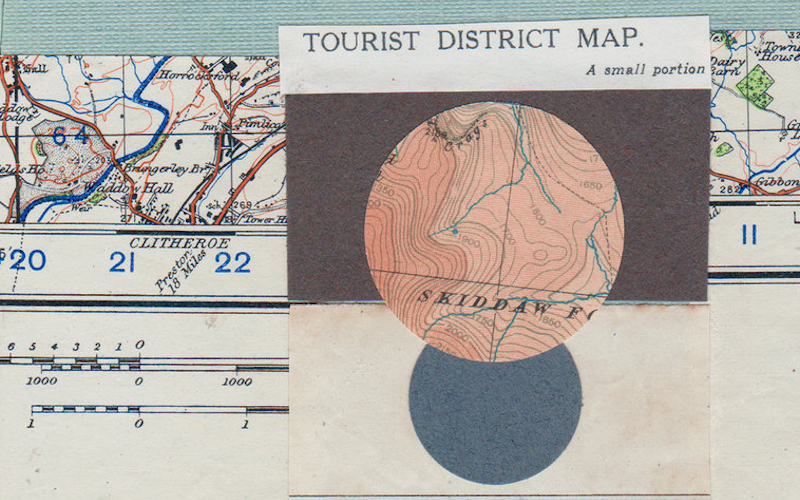
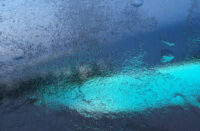
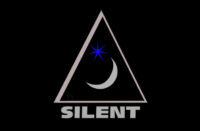



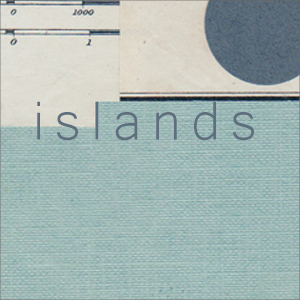


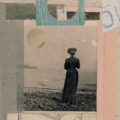
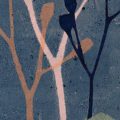

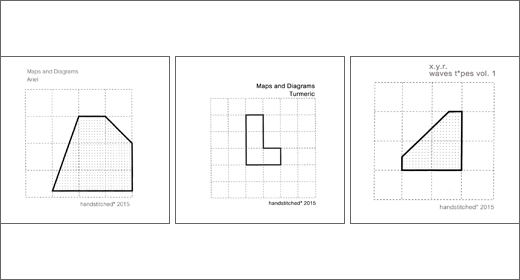
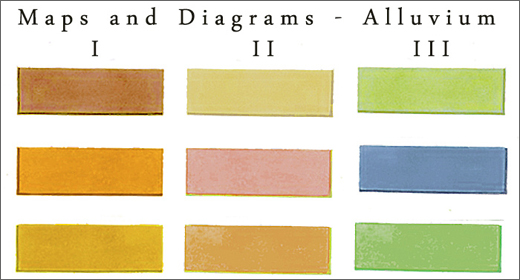


![Pole :: Tempus Remixes (Mute) — [concise]](https://igloomag.com/wp/wp-content/uploads/2025/04/pole-tempus-remixes_feat-75x75.jpg)






![Hasbeen :: Bunker Symphonies II (Clean Error) — [concise]](https://igloomag.com/wp/wp-content/uploads/2025/04/hasbeen-bunker-symphonies-ii_feat-75x75.jpg)

